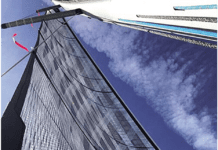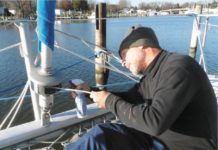Sailing the Sea of Cortez in Summer: Cruising Guide and Off Season Tips
When people think of the Sea of Cortez, also known as the Gulf of California, images from Steinbeck’s “The Log from the Sea of...
Waterproof Connectors: 4 Year Update of SAE 2-Pin Connectors
I’ve long hated proprietary 12 volt connectors. This project started six years ago when the power plug on my tiller pilot failed, falling to...
Sailboat Stewardship Tips: How Not To Be “That Person”
Good boats outlive us, or at least outlive our interest in them. In time, we become the dreaded Previous Owner (PO). Will we make this...
DIY Winch Feeder
It was snowing and I needed a project. Ever since the article on cross sheeting, “Where Winches Dare Go,” I’ve been wanting to add...
How To Extend Your Canvas’ Lifespan
Protecting your canvas will extend its life as well as provide you and your crew protection from the sun and elements for many years....
How To Streamline Your Maintenance Program: A Beginner’s Guide
Owning and using a boat is all about maintenance. While maintenance is not fun—it can be filthy and arduous—it must be done if you...
Haul-Out Havoc: Freshwater Sailors Battle Historic Low Water Levels
Worldwide, freshwater lakes, rivers and waterways are currently impacted by the lack of rain and water levels, creating serious concerns for all types of...
Albin Ballad 30 Used Boat Review
As my son and I eased my 30-ft. sloop up to the dock at our winter yard in Mamaroneck, NY, a gentleman came racing...
Gas Vs. Electric Outboards: Consider Your Total Sailing Carbon Footprint
If you own or intend to buy an electric outboard because it is clean and quiet, read no further. Today’s four-stroke outboards are much...
Krypton Antifouling Paint: Two-Year Follow Up
After two years of panel and on-boat testing on the mid-Chesapeake Bay, we settled on Total Boat Krypton, one of the top performing copper-free...

















































